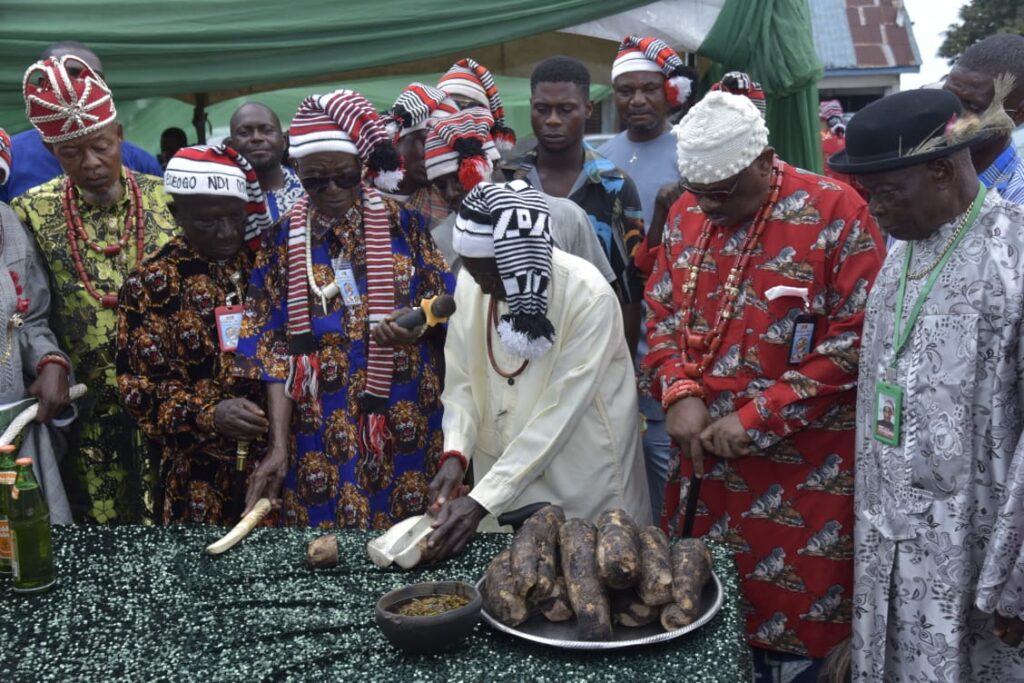As part of efforts to revive and preserve the cultural heritage of the people, Abia State Governor, Dr. Alex Otti, has pledged to conduct a comprehensive census of heritage sites across the state with a view to revamping them.
Speaking at the 2025 Annual Iri-Ji (New Yam Eating Ceremony) Oha Abam Festival held at Abam High School, Ozu Abam, in Arochukwu Local Government Area, Governor Otti underscored the need for a cultural renaissance as a vehicle for sustaining communal identity.
Represented by the Commissioner for Culture, Arts and Creative Economy, Chief Mathew Ekwuribe, the governor emphasized that “a people without culture are a people without identity.”
He urged the people of Abam to sustain their cherished cultural values, describing them as a symbol of the community’s uniqueness, courage, and enterprise.
In his remarks, the Secretary to the State Government and Chairman of the occasion, Professor Kenneth Kalu, highlighted some of the state government’s key interventions in Abam, including the reconstruction of the Omenuko Bridge, the Abam Ring Road, and the Ozu Abam–Ndi Okereke–Arochukwu Road.
He called for continued support for Governor Otti’s administration and urged residents to maintain peace and harmony in the community.
Also speaking, the Member representing Arochukwu/Ohafia Federal Constituency, Chief Ibe Okwara Osonwa; the Member representing Arochukwu State Constituency, Hon. Uchenna Okoro Kalu; Special Adviser to the Governor on Political Matters, Chief Acho Obioma; and Labour Party Chieftain, Chief David Ogba Onuoha, all lauded the people of Abam for their unity and reaffirmed the government’s commitment to grassroots development.
The General Manager of Abia Newspaper and Publishing Corporation, Chief Jones Nnanna Ike, described the Iri-Ji Oha Abam as a unifying event that symbolizes progress, culture, and community strength.
Similarly, a community leader and former President-General of the Abam Development Union, Dr. John Egbuta, expressed appreciation to Governor Otti for his love and support for the people of Abam.
The colourful ceremony featured the traditional roast yam cutting, cultural dances, displays by masquerades, appearances by traditional rulers, and visits from communities with historical ties to the people of Abam.















